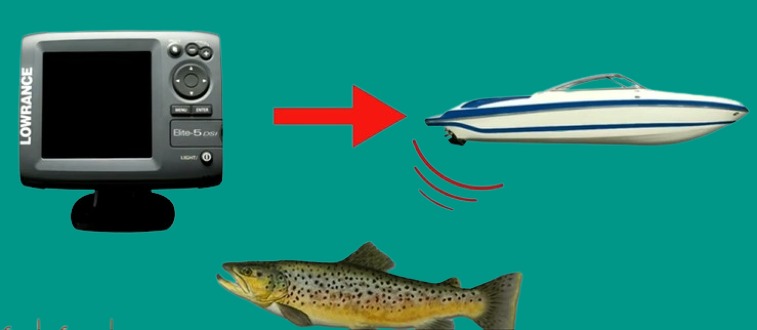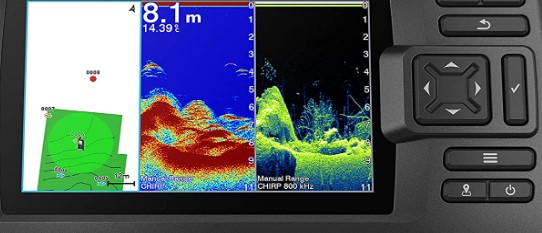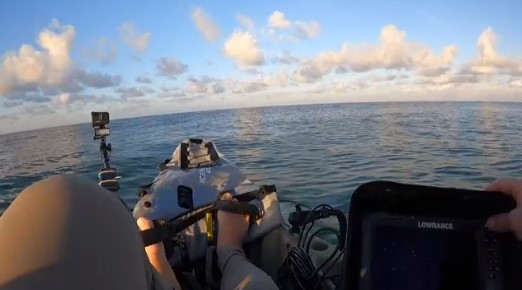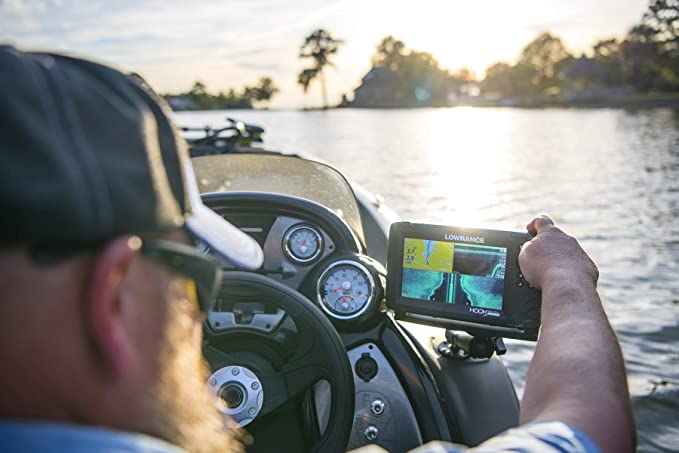Fish finders are becoming increasingly popular among anglers, and for good reason. These handy devices provide a wealth of information about the underwater world, making it easier to find and catch fish. From identifying schools of fish to tracking the depth and contour of the bottom, fish finders can greatly enhance the fishing experience.
But with so many different models and features to choose from, it can be tough to know which one is right for you. That’s why we’ve put together this comprehensive guide to help you understand what you need to know about essential features of fish finders and other important information.
Whether you’re a seasoned angler or just getting started, this article will give you the information you need to make an informed decision and get the most out of your fishing experience.
Table of Contents
Why they are used for?
Fish finders are used by anglers to improve their chances of catching fish by providing information about the underwater environment, including the location and behavior of fish. The information displayed on the fish finder’s screen can help anglers make more informed decisions about where to fish, what type of bait to use, and how to present it.
Fish finders are especially useful for locating fish in deep water or in areas with poor visibility, where it would otherwise be difficult to see the fish. Additionally, some advanced fish finders can also provide information about water temperature, depth, and bottom structure, which can be valuable information for fishing and navigation.
How does a fish finder work?

A fish finder is an electronic device used by anglers to locate and track schools of fish in bodies of water such as lakes, rivers, and oceans.
It works by emitting sound waves that travel through the water and bounce back when they encounter fish or other underwater objects. The reflected signals are then processed by the fish finder and displayed on its screen as an image of what’s under the water’s surface. This allows the angler to identify the location and size of fish, and to determine the best place to cast their line.
Essential features of fish finders to excel in fishing?

When choosing a fish finder, here are some important factors to consider:
Display
Look for a fish finder with a clear and high-resolution display that is easy to read, even in bright sunlight.
Frequency
Choose a fish finder with a frequency that matches the type of fishing you plan to do. Higher frequencies are better for shallow-water fishing, while lower frequencies are better for deep-water fishing.
Sonar technology
Consider the type of sonar technology used by the fish finder. Some fish finders use traditional sonar, while others use more advanced technologies such as CHIRP (Compressed High-Intensity Radiated Pulse) or DownScan Imaging.
Power
Look for a fish finder with sufficient power to penetrate the water at the depths you plan to fish.
Portability
If you plan to fish from a kayak or small boat, look for a fish finder that is compact and portable.
Additional features
Consider additional features such as GPS, mapping capabilities, and wireless connectivity.
Price
Fish finders can range from relatively inexpensive to quite expensive, so consider your budget when choosing a fish finder.
It’s also a good idea to read reviews and compare features and specifications before making a purchase to ensure you choose a fish finder that is right for your needs.
Why are fish finders so expensive?
Fish finders can be expensive due to a combination of factors, including:
- Technology: Fish finders have evolved significantly in recent years, and the latest models often include advanced technologies such as CHIRP sonar, DownScan Imaging, and built-in GPS. These technologies can significantly increase the cost of a fish finder.
- Display: High-quality displays, such as those with high resolution and color screens, can add to the cost of a fish finder.
- Power: Fish finders with high power output and advanced sonar technologies can be more expensive due to the cost of the components and manufacturing.
- Brand: Fish finders from well-known and established brands are often more expensive due to their reputation and the cost of research and development.
- Additional features: Fish finders with additional features, such as built-in mapping, wireless connectivity, and GPS, can also be more expensive.
Overall, the cost of a fish finder will depend on the specific features and technologies included, as well as the brand and quality of the device. Cheaper models with basic features may be suitable for casual anglers, while more expensive models with advanced features may be more suitable for serious anglers or professionals.
Difference between expensive and cheap fish finders?
The difference between expensive and cheap fish finders can be significant and often comes down to the features, technology, and quality of the components.
Expensive fish finders typically include:
- Advanced sonar technology: Expensive fish finders often use advanced sonar technologies such as CHIRP, DownScan Imaging, or SideScan Imaging, which can provide more detailed and accurate information about the underwater environment.
- High-quality displays: Expensive fish finders often have high-resolution and color displays that are easy to read and provide clear images of what’s under the water.
- Power: Expensive fish finders often have higher power output, allowing them to penetrate deeper and provide a wider view of the underwater environment.
- Additional features: Expensive fish finders often come with additional features such as GPS, mapping, and wireless connectivity, which can enhance the fishing experience.
Cheap fish finders, on the other hand, typically have:
- Basic sonar technology: Cheap fish finders may use traditional sonar technology, which can provide limited information about the underwater environment.
- Lower-quality displays: Cheap fish finders often have smaller and lower-resolution displays that can be harder to read and provide less detailed images of what’s under the water.
- Lower power: Cheap fish finders often have lower power output, which can limit their ability to penetrate deeper and provide a wider view of the underwater environment.
- Limited features: Cheap fish finders may have limited features and fewer additional capabilities, such as GPS or mapping.
Ultimately, the choice between an expensive and cheap fish finder will depend on your specific needs and budget. If you’re a serious angler or need advanced features, an expensive fish finder may be the better choice, while a cheap fish finder may be sufficient for casual anglers.
is a fish finder worth it on a kayak?

Yes, a fish finder can be worth it on a kayak, especially if you plan on doing a lot of fishing from your kayak. A fish finder can help you locate and identify fish and structures underwater, increasing your chances of a successful fishing trip.
A fish finder can also help you to find new fishing spots and avoid areas that are unproductive, saving you time and increasing your overall fishing efficiency. Additionally, some fish finders come with GPS capabilities, which can be particularly useful for kayak fishing, as you can mark and return to productive fishing spots easily.
However, it’s important to consider the size and weight of the fish finder, as well as its battery life, as these can be important factors when fishing from a kayak. Additionally, it’s a good idea to make sure the fish finder is compatible with your kayak and that you have a secure and accessible place to mount the unit.


